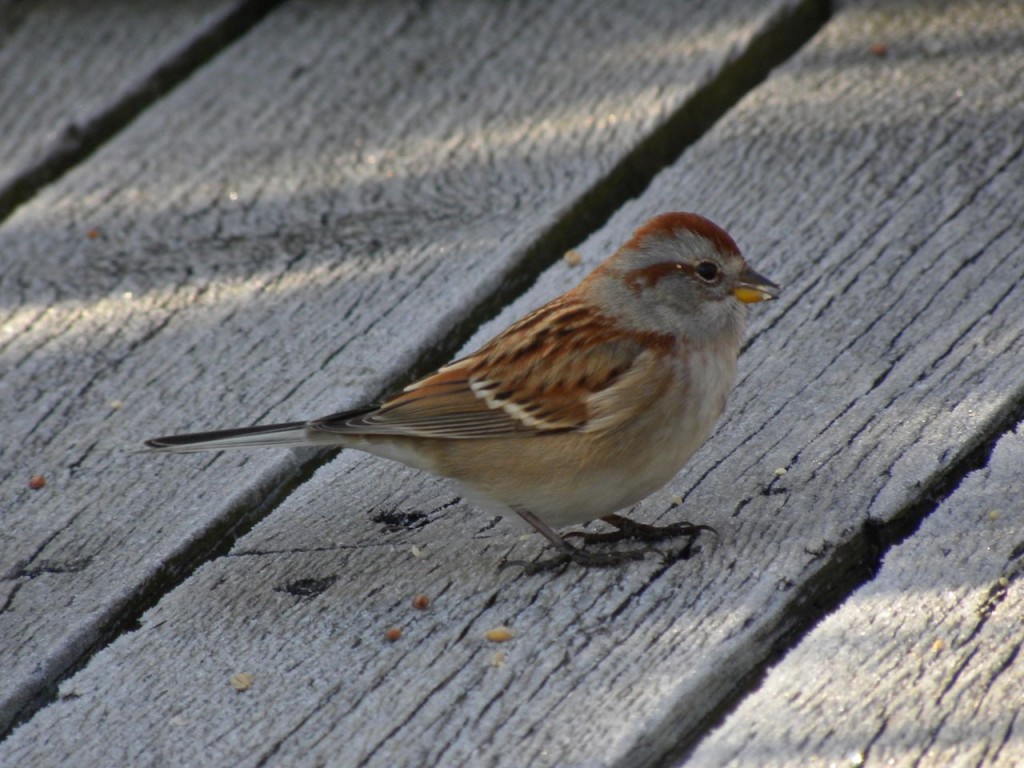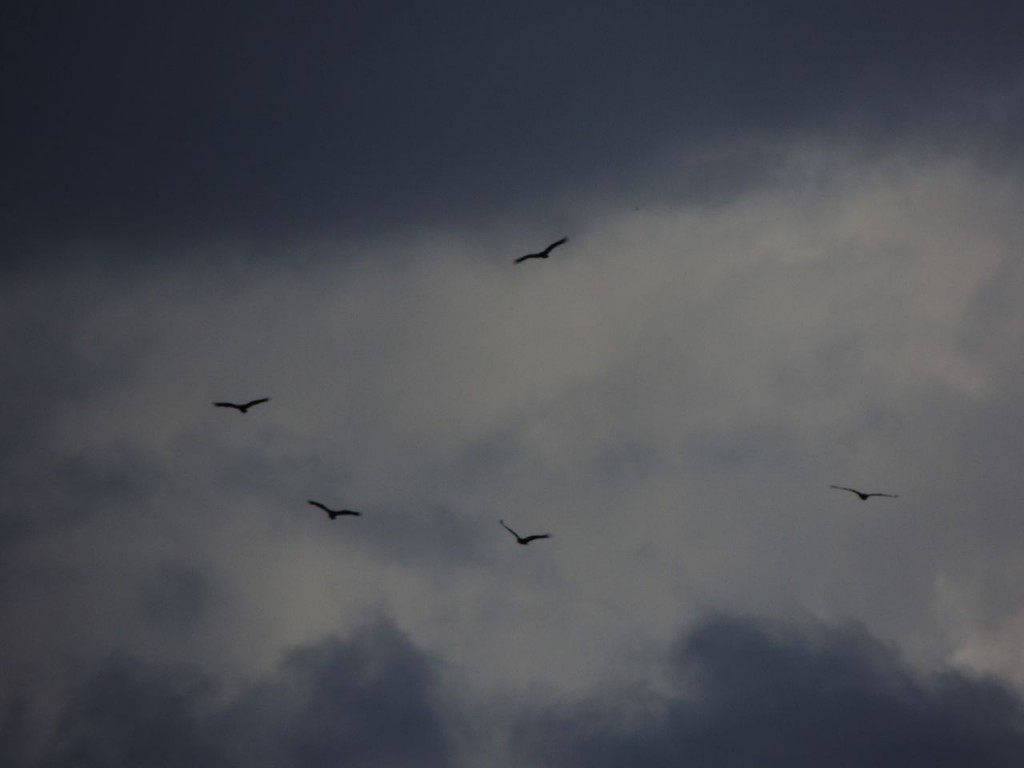1 November 2015 Bronte Provincial Park, Oakville ON. For several decades our local naturalists’ club has been running a Fall Bird Count on the first Sunday in November. My participation has been intermittent but this year I offered to join a group who cover a large count territory not far from home. I was co-counter with Andrew, a young, sharp-eyed and sharp-eared man with a keen passion for adding birds to his lists. He had just returned from a five-hour-each-way trip to Ottawa to see a Pink-footed Goose. Not the way I enjoy the study of birds but each to their own.
We started our morning at a rough and ready parking area to the north of a large expanse of dry and unkempt (and therefore attractive to all wildlife) fields. We were scarcely out of the car when he called out “American Tree Sparrow”. That really caught my attention (and became instant Bird of the Day) because I’ve been watching for them for a couple of weeks, wondering when they’ll be back. They are endearing little winter visitors almost identical in plumage to Field Sparrows, a summer visitor. Last spring I observed that no sooner had winter’s American Tree Sparrows left for their northern breeding grounds than the Field Sparrows arrived to take their place.

There were dozens of tree sparrows here along with a handful of American Gold Finches, House Finches and a White-crowned Sparrow working over a weedy and seedy bank; a good start to our count exercise.
We spent the better part of three hours wandering around the fields, hedgerows and various bordering plantations and woods. I suppose it was about as good as November birding can get, not particularly remarkable, no rarities but plenty to see: There were massive swirling flocks of European Starlings, we estimated 560; widespread groups of American Robins; an American Kestrel and a few straggling Turkey Vultures.

With few exceptions, we were seeing what amounts to the birds of the winter ahead. This is not necessarily their stopping place, many will continue to move southward and others will arrive from further north. Numbers will thin out, but almost anything seen today is likely to be findable anytime in the winter months.